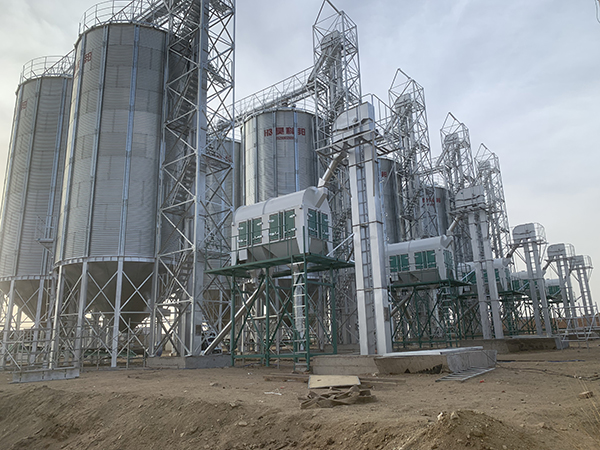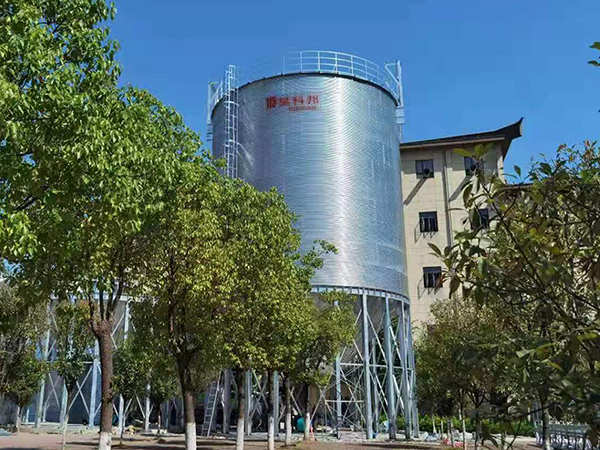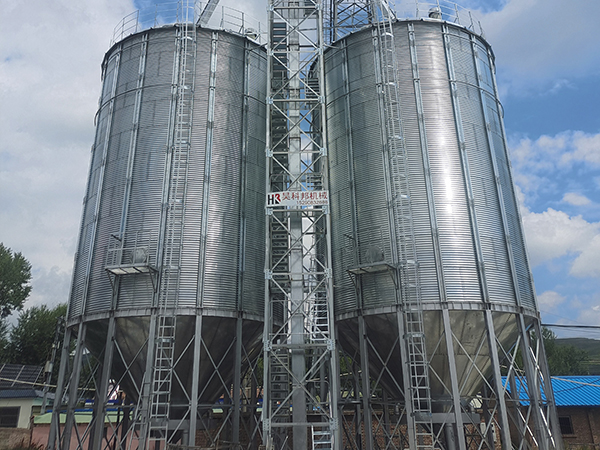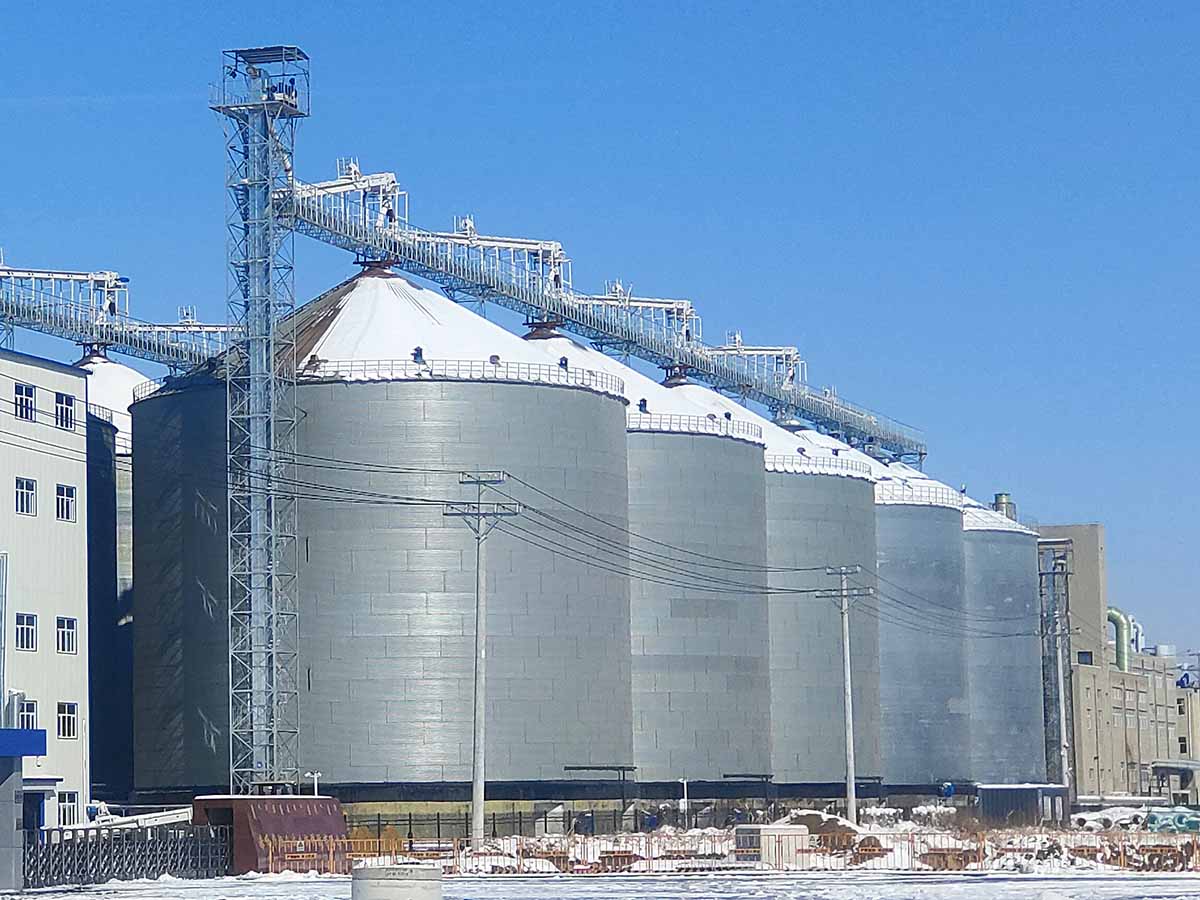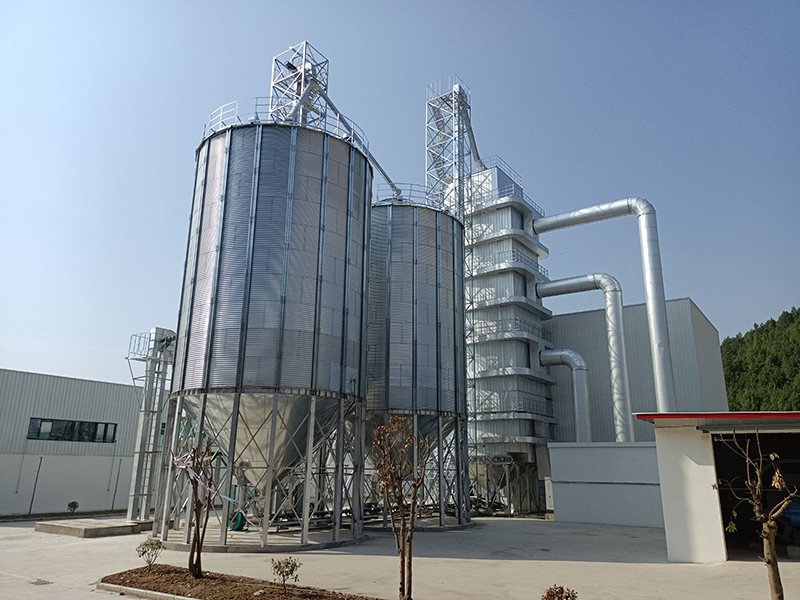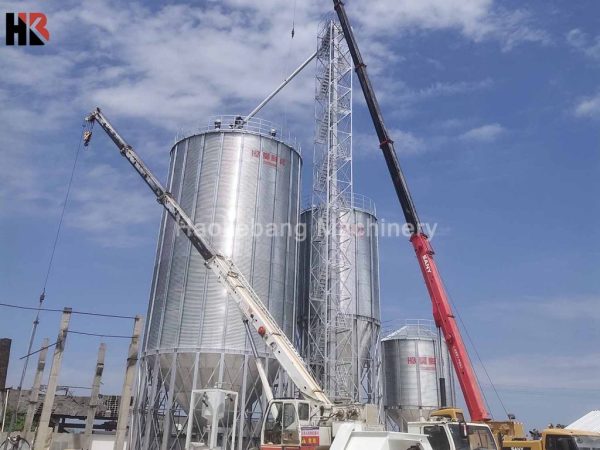Flour Silo
A flour silo is a type of vertical container specifically designed for the storage of flour. Typically constructed from high-quality galvanized sheets,
Flour Silo Introduction
A flour silo is a type of vertical container specifically designed for the storage of flour. Typically constructed from high-quality galvanized sheets, it possesses excellent sealing and breathability control functions, ensuring that the flour remains dry and not prone to moisture during storage, thereby extending its shelf life. The design of the silo facilitates mechanized material handling operations, enhancing storage efficiency. Compared to traditional flat warehouses, silos have a compact structure, occupy less land area, and are convenient for management and maintenance.
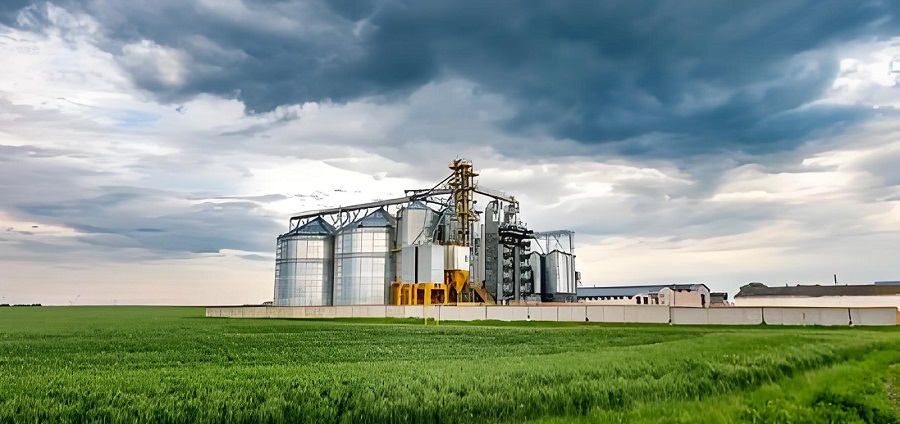
Flour silo features
Structural Design
Flour silo typically adopt cylindrical or square structures to maximize storage space and ensure structural stability. The materials used for the silo walls must be durable and possess good sealing properties to prevent the ingress of moisture, pests, and other environmental factors that could affect the quality of the flour.
Temperature and Humidity Control
Flour is sensitive to changes in temperature and humidity, hence silos are equipped with systems to control these conditions inside. These systems help maintain an optimal storage environment, preventing the flour from becoming damp or overly dry, thus preserving its quality.
Ventilation System
Proper ventilation is crucial to prevent spoilage and extend the storage life of flour. The design of silos usually includes vents or ventilation equipment to ensure air circulation within the silo, reducing the risk of odors or spoilage due to prolonged storage.
Loading and Unloading System
To facilitate the entry and exit of flour, silos are fitted with specialized loading and unloading systems, such as screw conveyors and pneumatic conveying systems. These devices ensure the rapid, efficient, and safe handling of flour.
Cleanliness and Hygiene
The design of flour silo must consider the requirements for cleanliness and hygiene. The interior of the silo should be easy to clean to prevent contamination and the growth of bacteria, ensuring the sanitary safety of the flour.
Automation and Monitoring
Modern flour silo may utilize automated technologies, including monitoring systems and control software, to track the storage status of the flour and the environmental conditions of the silo in real time, achieving intelligent management.
Safety Measures
Flour silo must also take into account safety factors, such as fire prevention and explosion protection. Therefore, silos may be equipped with fire-fighting equipment, explosion-proof designs, and emergency measures for situations that require immediate response.
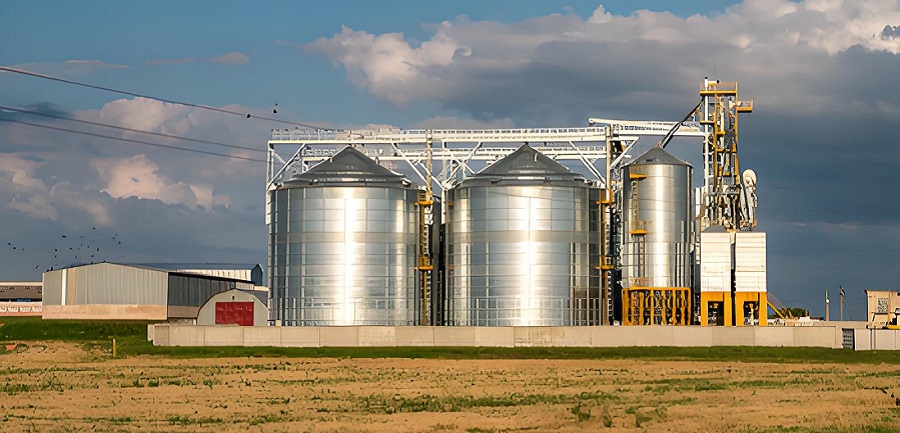
flour silo structure
Silo Body
This is the core part of the flour silo, usually designed in a cylindrical or square shape to maximize storage space and ensure structural stability. The silo body is constructed from durable materials, such as galvanized steel sheets, offering good sealing and strength.
Top Structure
The top of the silo may include a cover or canopy to seal the silo, preventing rainwater and pests from entering. The top may also feature ventilation openings or equipment to regulate air circulation within the silo.
Bottom Structure
The bottom of the silo is designed with discharge outlets and associated conveying equipment, such as screw conveyors or pneumatic conveying systems, for loading and unloading flour. The bottom structure may also contain a ventilation system to maintain the desired temperature and humidity inside the silo.
Temperature and Humidity Control System
To maintain an optimal storage environment, the silo may be equipped with temperature and humidity control devices, such as heaters, coolers, and dehumidifiers, to prevent the flour from becoming damp or overly dry.
Ventilation System
The ventilation system ensures air circulation within the silo through the placement of vents or the use of fans, reducing the risk of flour spoilage.
Loading and Unloading System
The loading and unloading system comprises equipment used to transfer flour into and out of the silo, such as conveyor belts, elevators, and other automated devices, to increase operational efficiency.
Monitoring and Automation System
Modern flour silos may be fitted with monitoring cameras, sensors, and automated control systems to monitor the conditions inside the silo in real-time and manage it automatically.
Safety Facilities
To ensure operational safety, the silo may include fire-fighting equipment, explosion-proof measures, emergency alarm systems, and other safety facilities.
Cleaning System
Considering the hygiene requirements of flour, the silo may be equipped with a cleaning system to periodically clean the interior of the silo and prevent contamination.
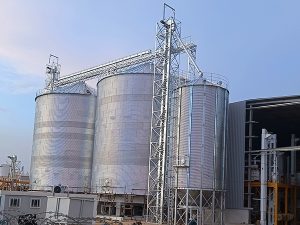
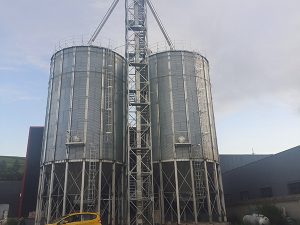
Flour Silo Advantages
High Space Utilization
The vertical silo structure greatly enhances space utilization, especially in areas where land resources are limited. It provides a large storage capacity on a small footprint.
Excellent Storage Conditions
Silos are specially designed to offer good ventilation performance, which helps maintain suitable internal temperature and humidity levels. This prevents the flour from becoming damp, overheating, or molding, effectively protecting the quality of the flour.
High Level of Automation
Flour silo are typically equipped with modern material management systems that support automated control of material intake and outtake, as well as inventory management. Real-time monitoring technology allows for accurate tracking of the quantity and condition of materials inside the silo.
Safety and Durability
The materials used in flour silo usually have high strength and good corrosion resistance, ensuring load-bearing capacity and stability over long-term use. Additionally, their excellent seismic performance allows them to maintain structural integrity during natural disasters such as earthquakes, ensuring the safety of stored materials.
Reduced Operating Costs
The mechanized and automated operations of silos reduce labor costs, and their efficient material handling processes and lower maintenance costs contribute to overall cost savings.
Environmental Protection
The enclosed design of silos helps to minimize dust pollution, and when combined with efficient dust removal systems, they meet environmental protection requirements more effectively.
Application scope of Flour Silo
Coban Silo is widely used for grain storage such as wheat, corn, soybean, paddy, rice, soybean meal, barley, malt, sunflower seeds, rapeseed, peanuts, flour, and other powder materials, oat, special Silo, and seeds, etc.

Flour Silo technical parameters
Scientifically speaking, the Silo capacity should be measured with volume (m3). Even in the same grain Silo, the storage tons will be different for different grains with different densities. The following table is calculated based on a Silo density of 0.75kg/m3, and surely HKB customizes Silo systems unique for you.
| Most Popular Hopper Bottom Steel Silo Technical Specifications | ||||||||
| Capacity | 50Ton | 100Ton | 150Ton | 200Ton | 300Ton | 500Ton | 1000Ton | 1500Ton |
| Model | TCZK
03605 |
TCZK
04507 |
TCZK
05507 |
TCZK
06406 |
TCZK
07307 |
TCZK
07313 |
TCZK
11010 |
TCZK
12811 |
| Diameter(m) | 3.667 | 4.584 | 5.500 | 6.417 | 7.334 | 7.334 | 11.000 | 12.834 |
| Total Height(m) | 9.56 | 12.53 | 13.25 | 12.85 | 14.70 | 21.42 | 20.95 | 23.51 |
| Volume(m³)
Density:0.75ton/m³ |
69 | 150 | 222 | 273 | 415 | 699 | 1346 | 2039 |
| Most Popular Flat Bottom Steel Silo Technical Specifications | ||||||||
| Capacity | 1000Ton | 1500Ton | 2000Ton | 2500Ton | 3000Ton | 5000Ton | 8000Ton | 10000Ton |
| Model | TCK
10014 |
TCK
11915 |
TCK
13715 |
TCK
15514 |
TCK
15518 |
TCK
18321 |
TCK
24718 |
TCK
25621 |
| Diameter(m) | 10.084 | 11.918 | 13.750 | 15.584 | 15.584 | 18.334 | 24.751 | 25.668 |
| Total Height(m) | 18.69 | 20.34 | 20.87 | 20.30 | 24.78 | 28.60 | 26.99 | 30.60 |
| Volume(m³)
Density: 0.75ton/m³ |
1335 | 2009 | 2701 | 2467 | 4145 | 6693 | 10879 | 13484 |
After-sale Service
- – HKB provides advanced grain safety storage technology to assure your grain silo 100% quality stability.
- – grain silo Quality guarantee is one year after installation and commissioning or 18 months after leaving China Port. Maturity is the first.
- – 7 days x 24 hours service, within 24 hours reply/solve of any technical issues upon request.
- – Routinely telephone track to remove all might be problems grain silo or issues guarantying the whole system grain silo long-lasting safety and reliability.
- – HKB will consider all other needs like customs clearance, sea delivery, insurance, customs tax benefit plan, documentation, etc. So our respected Users feel so relaxed and easy to get the grain silo system well.

